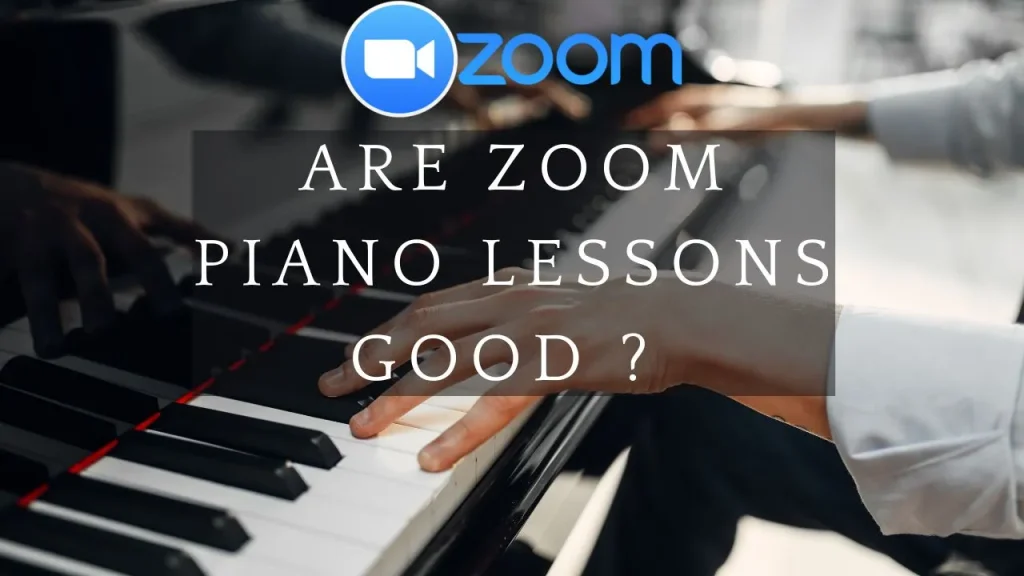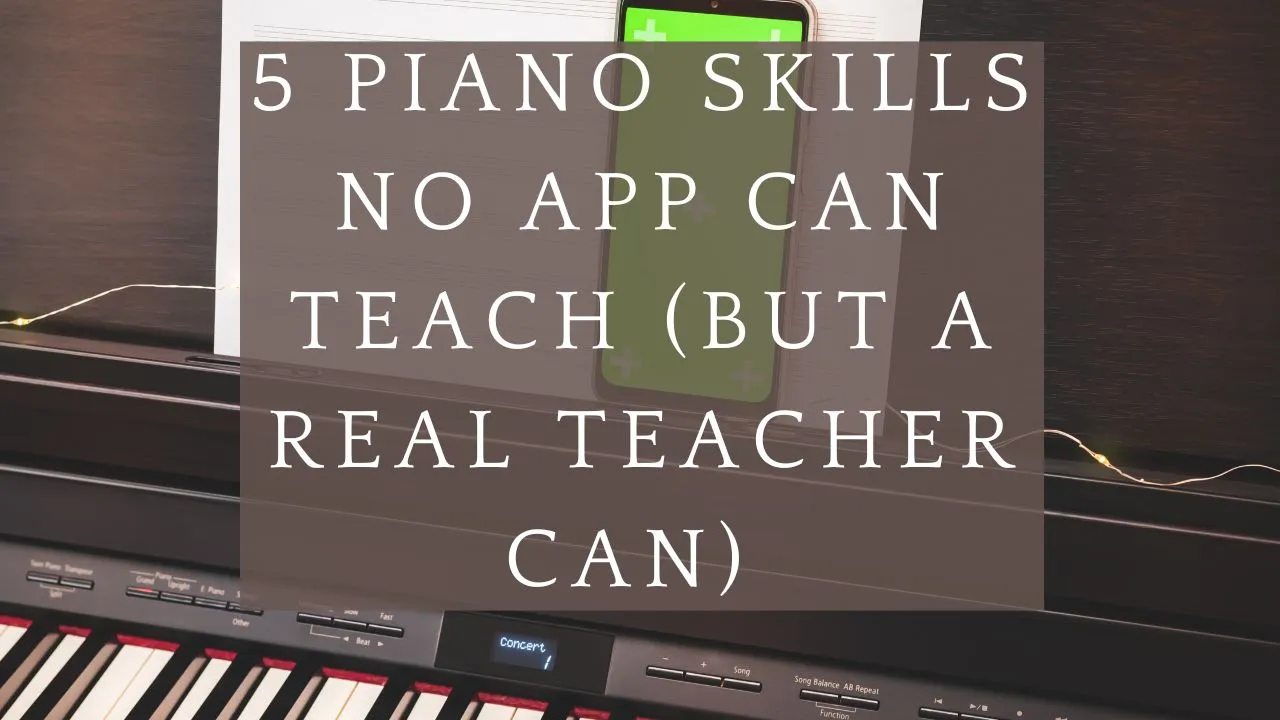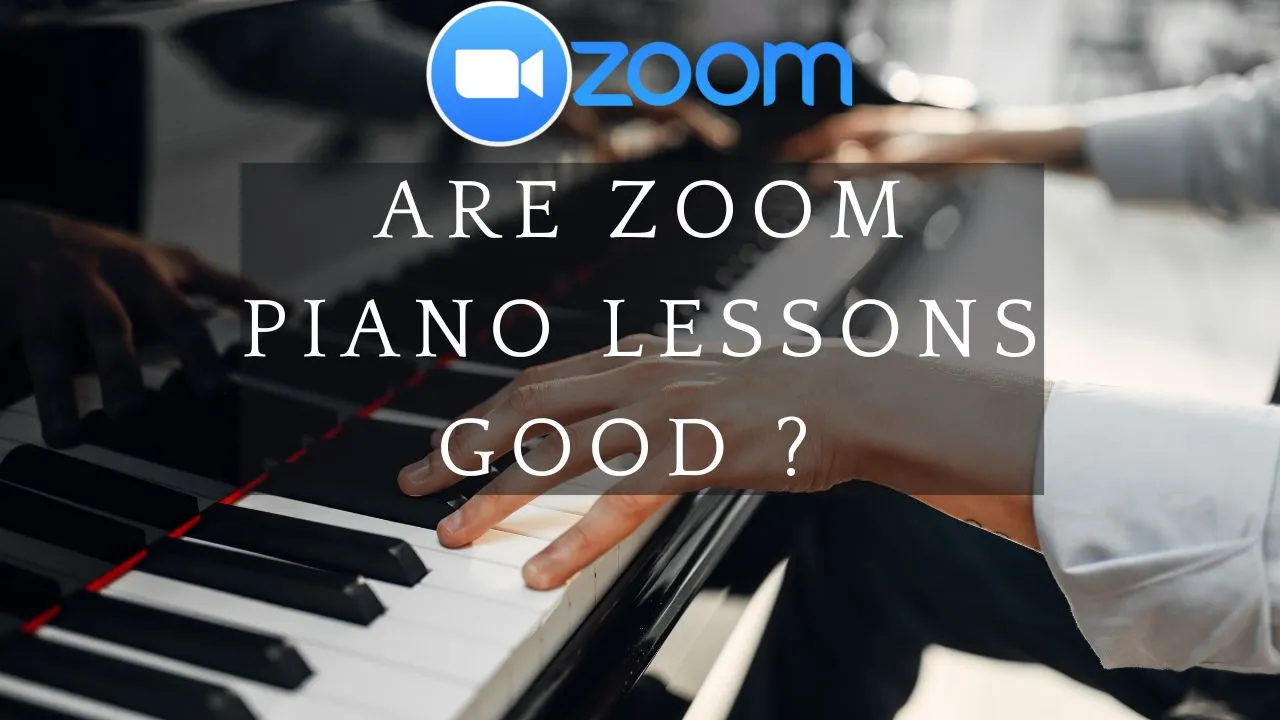When I told my students in 2017 that I was moving to Spain, nearly all of them wanted to continue lessons with me online. At the time, Zoom piano lessons were something very new, and I wasn’t sure if it was going to work.
Now, in 2025, I still teach many of these students online, and they continue to take formal ABRSM exams. I have seen no reduction in their exam results—in fact, my students have generally tended to do better in exams than when we had face-to-face lessons. Remarkably, all of my Grade 8 piano students over the past eight years have achieved distinction.
The relevance of Zoom lessons is clear: modern technology lets families keep learning from anywhere. In fact, during the COVID-19 pandemic, piano teachers around the world turned to video conferencing to keep lessons going. Some may wonder how virtual teaching stacks up against sitting side-by-side at a piano. The good news, backed by research, is that Zoom piano lessons can be highly effective when done right. So, are Zoom piano lessons good? In this article, I will explore the benefits, challenges, and best practices of online piano instruction.
Research: Online Lessons are Effective
Recent research challenges early doubts about virtual music lessons. Studies consistently show that online piano instruction can match or even exceed traditional in-person learning in many ways. One analysis found that students taking Zoom lessons attended about 64% more lessons than those in person, and progressed around 24% faster.
Another controlled study showed that students receiving online instruction with individualised support achieved significantly higher test scores than those in the standard curriculumfiles.eric.ed.gov. These findings suggest that well-designed online lessons deliver results comparable to, and sometimes better than, traditional ones.
Cognitive and Academic Benefits
Online lessons still capture the brain benefits of music education. Children who learn piano – whether online or offline – gain stronger verbal memory, language development, reading skills, and executive functions.
For example, a major review of 29 studies found that music training boosts children’s executive function (focus, memory, task-switching), which supports learning in all subjects. Adults benefit too: studies show that adult music learners improve processing speed, short-term memory, problem-solving skills, and even reduce stress. Importantly, these cognitive benefits remain consistent regardless of whether the lessons are online or face-to-face.
Academic Studies Confirm
Several published papers underline the potential of Zoom lessons. Ma and Ma (2023) studied online piano education tools in China and reported that over 85% of students enjoyed high-quality sound and intuitive features like screen-sharing, creating a rich learning environment.
Similarly, Kaleli (2021) found that an online piano program with personalised feedback led to higher achievement test scores than the standard curriculum.
These findings suggest that when lessons are thoughtfully organised, the virtual format can be as powerful as traditional classroom instruction.
Learning piano at home can have real advantages. Students use their own familiar instrument and room, eliminating the awkward transition of adjusting to a different piano each week. Teachers can see exactly how a student sets up their bench, pedal, and sheet music, making it easier to suggest ergonomic improvements.
Modern platforms allow instant screen-sharing of sheet music and multimedia resources. Many students even find that being in a comfortable home setting helps them focus; rather than hauling heavy books, the teacher can send materials to the screen or link to practice videos. These conveniences often make lessons more efficient and less stressful for families.
Curious About Learning Piano Online?
Ready to see how much you or your child can achieve with personalised Zoom piano lessons?
Learn from the comfort of home with expert guidance, flexible scheduling, and proven results.
Benefits and Drawbacks of Zoom Lessons
Advantages of Zoom Lessons
Zoom lessons offer distinct benefits compared to traditional studio lessons. The top pro is convenience and flexibility. There’s no commute, so families with busy schedules can fit music into their day more easily. Students often end up spending more time practising, since they avoid travel.
Online lessons also break geographic barriers: a learner in a remote area can work with a specialist teacher hundreds of miles away. Digital tools add value as well: teachers can record sessions for students to review later, and use interactive apps or virtual pianos on screen. In many studies, these unique learning tools and flexible scheduling are listed as key advantages of online instruction.
Limitations of Zoom Lessons
At the same time, there are real challenges. The biggest issue is audio quality and latency. Zoom’s default settings prioritise speech, which can compress and alter piano sound. However, turning on Zoom’s “Original Sound” feature and using an external mic can mostly fix this. Even so, a small delay remains. This means duets or ensemble playing are essentially impossible online – you simply can’t play together in perfect sync over Zoom. To work around this, lessons might use backing tracks or have the student practise with recorded accompaniments instead.
Another limitation is the loss of physical presence. If a student has a subtle technique problem or posture issue, the teacher cannot physically correct their hand placement. This is especially tricky for very young beginners who often need hands-on guidance to develop good habits. Instead, teachers must give very clear verbal instructions and use multiple camera angles to show hand positions.
Technical problems also occur: unstable internet connections, lag, or poor camera placement can interrupt or frustrate the lesson. Not all homes are ideal lesson environments, so families may need to find a quiet room and ensure stable WiFi to make Zoom lessons effective.
These drawbacks don’t make Zoom lessons inherently bad, but they do require preparation. In fact, research indicates that up to 95% of the effectiveness of a traditional lesson can still be achieved online when teachers plan ahead.
Knowing the challenges ahead of time allows teachers and families to mitigate them (for example, using a wired connection and positioning the camera properly). Overall, the consensus among educators is that with good tech and realistic expectations, online lessons can be as good as in-person lessons.
Side-by-Side Comparison
Below is a quick comparison of key pros and cons of Zoom piano lessons:
| Benefits (Zoom Lessons) | Drawbacks (Zoom Lessons) |
|---|---|
| Learn on your own piano at home, in a comfortable familiar setting. | Potential audio lag and sound distortion unless audio is optimised. |
| Highly flexible scheduling (no travel needed). | Requires reliable internet and equipment (glitches or poor video can interrupt lessons). |
| Access to qualified teachers anywhere in the world. | Limited real-time interaction – cannot play duets or ensembles together. |
| Unique digital tools: instant screen-sharing of music, on-the-spot recording for review. | Reduced ability for hands-on correction; young children especially may need physical guidance. |
| Often lower stress: students stay safe and focused at home (no outside distractions). | Requires strong self-discipline and focus, since the student is on their own between lessons. |
This is a video of one of my online piano students, Tom, playing the first movement of Beethoven’s Sonata in G, Op. 79. Tom later went on to achieve a distinction in Grade 8.
Who Thrives with Zoom Piano Lessons?
Zoom lessons tend to work best for certain kinds of learners. Self-motivated, independent students often do very well online. They benefit from the autonomy and typically establish steady home practice routines. Adults or teens with busy schedules excel, since flexible timing means they rarely miss lessons.
Intermediate and advanced students, who have already mastered basic technique, adapt quickly to video feedback and enjoy accessing expert instruction from afar. It is especially beneficial for students in rural or remote areas, since Zoom removes geographic barriers.
On the other hand, online lessons can be harder for very young beginners. Children age 5–8 often need the personal support that comes naturally in an in-person lesson. Students who struggle with focus or who have unreliable internet connections may also find online lessons challenging. Group classes or ensemble-oriented learners can still enjoy online lessons, but they won’t get the live group-playing experience.
The table below summarises which students typically find Zoom lessons a good fit and which might face more difficulty:
| Student Type | Zoom Piano Lessons |
|---|---|
| Self-motivated, independent learners | Very good – they enjoy the autonomy and flexible pace. |
| Adults or teens with busy schedules | Very good – online lessons fit around work or school easily. |
| Intermediate/advanced students | Good – they typically need guidance on repertoire and technique, which works well online. |
| Rural/remote learners | Very good – gives access to teachers otherwise out of reach. |
| Introverted or anxious students | Good – a comfortable home setting often boosts their confidence. |
| Young beginners (5–8 years old) | Challenging – these learners often need hands-on attention and may find the screen abstract. |
| Students with unreliable tech or connectivity | Challenging – frequent interruptions can disrupt learning (smooth tech is essential). |
| Group or ensemble-focused learners | Moderate – technology can simulate some group play, but real-time ensemble performance isn’t feasible. |
Overall, the best candidates for Zoom piano lessons are motivated individuals (of any age) who have a stable internet setup and are comfortable with video calls. Parents and teachers can help younger or less tech-savvy students by setting clear expectations and practising together to keep them on track.
Teacher Perspective and Best Practices
Based on my eight years of online teaching, a few key factors make Zoom lessons successful. With the right approach, they can be as good as or even better than face-to-face lessons. The essentials are:
Proper technical setup: Use a camera angle that shows both hands clearly, ensure a strong internet connection, and enable Zoom’s “Original Sound” option so the piano’s tone comes through accurately. A good quality microphone helps too.
Engaging teaching methods: Effective online teachers use screen sharing and interactive visuals. For example, one might annotate sheet music live on screen or use an online whiteboard for theory, keeping students actively involved.
Regular practice routines: Consistency is crucial. Recording lessons for student review means pupils can revisit tricky passages on their own time. Setting clear daily practice goals and reviewing progress between lessons keeps students accountable.
Adapted expectations: Both teachers and families should understand the limitations of the format. For instance, since we can’t perform a live duet, we might use backing tracks or record separate parts. When in-person posture adjustments aren’t possible, we rely on detailed verbal instruction and sometimes use multiple cameras to show hand placement from different angles.
Communication and motivation: The best online students communicate often. Parents can help by ensuring lessons start on time and by reviewing practice logs with their child. Regular check-ins and positive reinforcement go a long way.
Even with these measures, some teachers and students still wonder if it “feels real.” In practice, many families find they cover more ground in each lesson online because the time is fully devoted to the student. Some even say they prefer certain aspects – for example, not having to arrive late or using fun digital tools in the lesson. In short, when properly set up, the virtual classroom can be highly effective.
Conclusion: Getting Started with Zoom Piano Lessons
Ultimately, the evidence and my own experience converge: Zoom piano lessons can be excellent. For many students they offer an outstanding way to learn music, combining flexibility with strong outcomes. Some research even suggests that well-executed online lessons can have superior progression rates.
If you’re considering piano lessons, keep an open mind. With a proper setup and an experienced teacher, a Zoom lesson can feel almost like being in the same room. As one study notes, for many learners online instruction is “an excellent and often superior alternative” to traditional lessons.
As a next step, I encourage you to schedule a free consultation Most teachers now offer an online demo so you can test the setup firsthand. All in all, Zoom lessons are a viable and often powerful option when the conditions are right. With modern tools and a bit of preparation, your child (or you) can make real musical progress at home.
If you would like to learn more or book your first online piano lesson, please get in touch. Let’s make beautiful music possible, no matter where you are!
FAQs About Zoom Piano Lessons
How effective are Zoom piano lessons compared to in-person lessons?
Research shows that Zoom piano lessons can be just as effective as in-person lessons. In fact, some studies found that students learning online attended more lessons and progressed faster than their peers in traditional settings. With the right setup and a skilled teacher, students can achieve excellent results — I’ve personally seen many of my own students achieve distinctions in their ABRSM exams through online learning.
Can children really learn piano well over Zoom?
Yes — children can benefit greatly from online piano lessons. They still gain the same improvements in focus, memory, and language skills as they would in person. Younger beginners (ages 5–8) may need more parental support, as they sometimes require hands-on guidance to build good habits. Older children, however, often thrive in the comfortable setting of their own home.
What equipment do we need for Zoom piano lessons?
The basics are simple: a reliable internet connection, a laptop or tablet, and a piano or keyboard. For the best results, I recommend enabling Zoom’s “Original Sound” setting and, if possible, using an external microphone. Positioning the camera so I can see both hands and posture clearly also makes a big difference.
What are the main drawbacks of Zoom piano lessons
The main limitation is that duets or ensemble playing don’t work in real time because of the slight audio delay. Teachers also can’t physically adjust hand position or posture. However, these challenges can be addressed with clear verbal instruction, camera angles, and backing tracks. Technical glitches are possible, but with a stable internet connection they are usually rare.
Who benefits most from Zoom piano lessons?
Zoom lessons are excellent for self-motivated students, busy adults, and intermediate or advanced learners who already have a foundation in piano technique. They are also ideal for students living in rural areas who may not have access to local teachers. Young beginners can still learn online, but they may need extra support from parents to get the most out of lessons.





